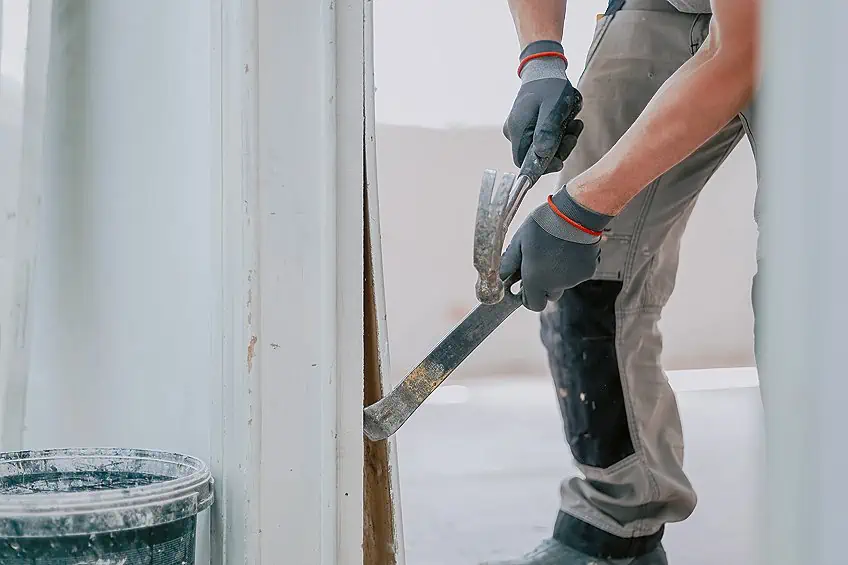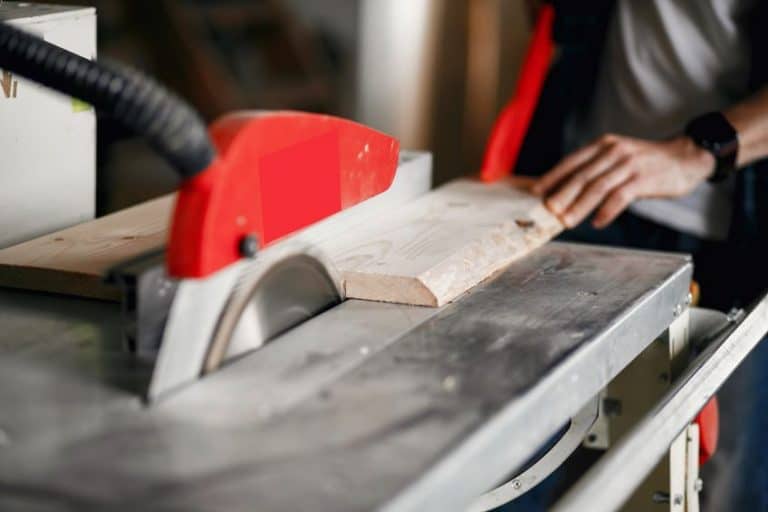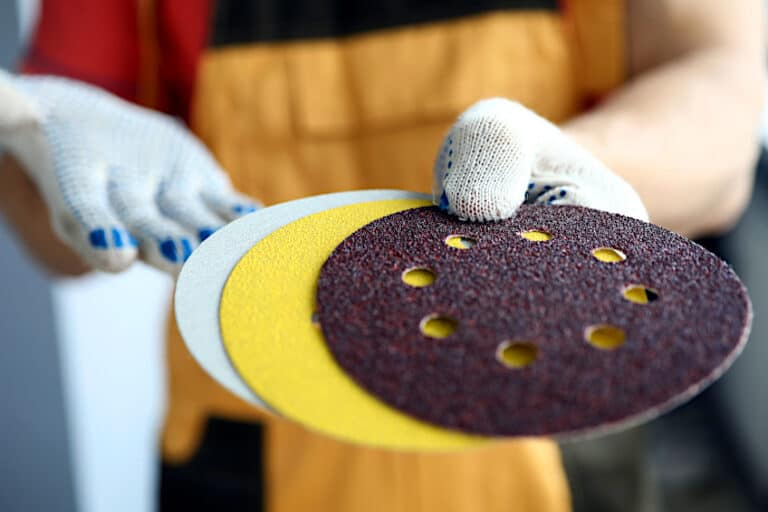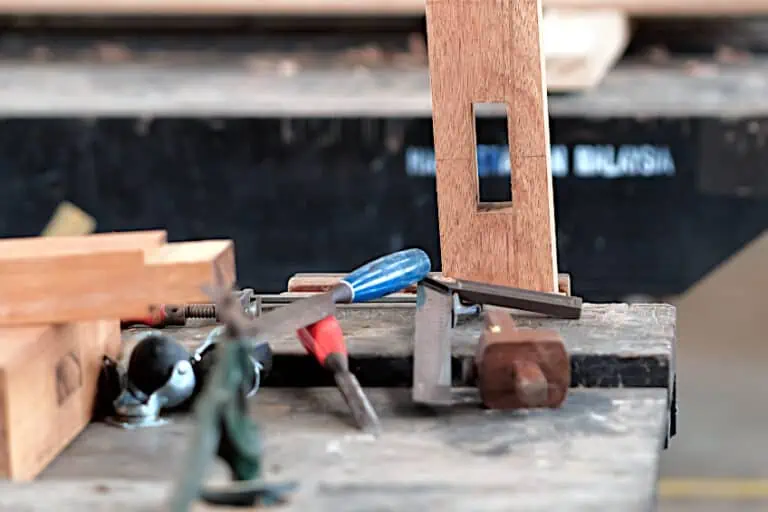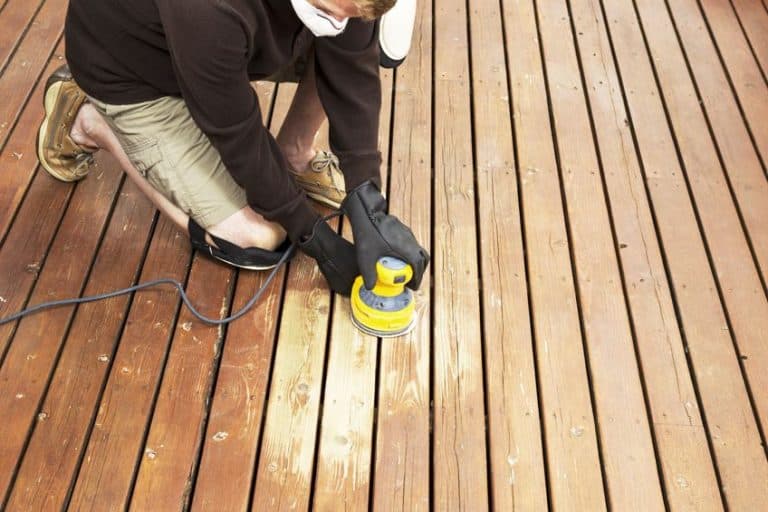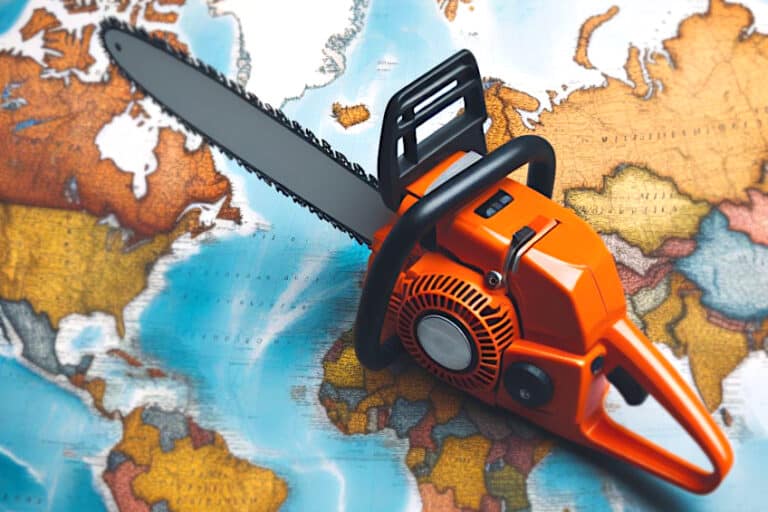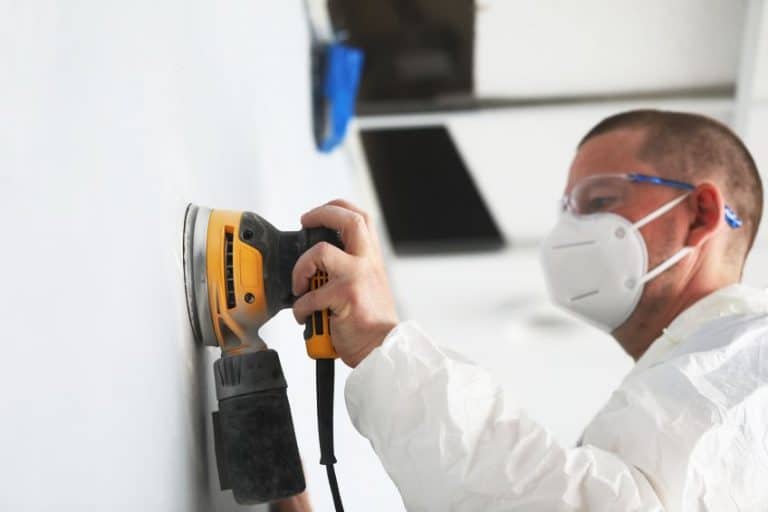Pry Bar Versus Crowbar – Leverage Legends
Welcome to the ultimate showdown in the world of woodworking: pry bar versus crowbar! These trusty tools are like the superheroes of our workshop, ready to swoop in and save the day when things get stuck, stubborn, or just plain tricky. With their rugged exteriors and undeniable strength, they’re the dynamic duo every DIY enthusiast dreams of wielding. But which one reigns supreme when it comes to prying, pulling, and popping? Strap in, because we’re about to embark on an epic journey through the realms of leverage and brute force to uncover the answer!
Table of Contents
Key Takeaways
- Pry bars and crowbars serve similar functions of levering but differ in design for specific tasks.
- A pry bar is generally thinner and flatter, suitable for precise, delicate work.
- Crowbars are thicker, providing greater leverage for heavy-duty tasks.
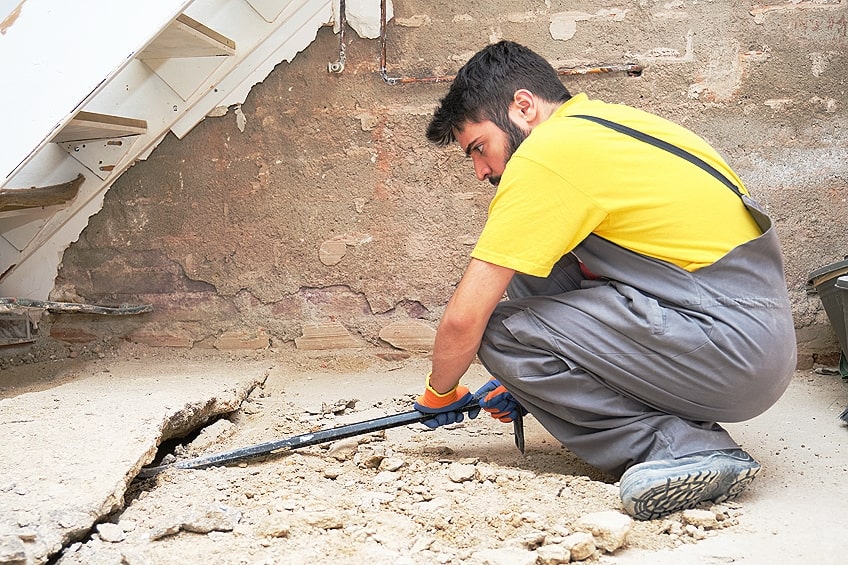
Prying Tools
When it comes to hand tools designed for levering or prying, the terms “pry bar” and “crowbar” are often mentioned. These tools, while similar in function, have distinct characteristics suited to different tasks. A pry bar, known for its flatter and thinner profile, is designed for more delicate operations where precision is crucial.
It is typically used to pull objects apart and can contain a claw, flattened, or pointed end, tailored for specific applications.
Conversely, a crowbar usually exhibits a thicker and often longer build, enhancing its leverage capacity for heavier tasks. The strength and durability of crowbars make them commonplace in construction and demolition, where robustness is required to pry apart sturdy materials. Understanding the nuances between a pry bar and a crowbar not only informs correct tool selection but also ensures safety and efficiency during use.
What Is a Pry Bar?
A pry bar, often referred to as a flat bar, is a hand tool designed for leverage. It is typically made from steel and features a flattened and pointed end, which allows it to be inserted into tight spaces for prying.
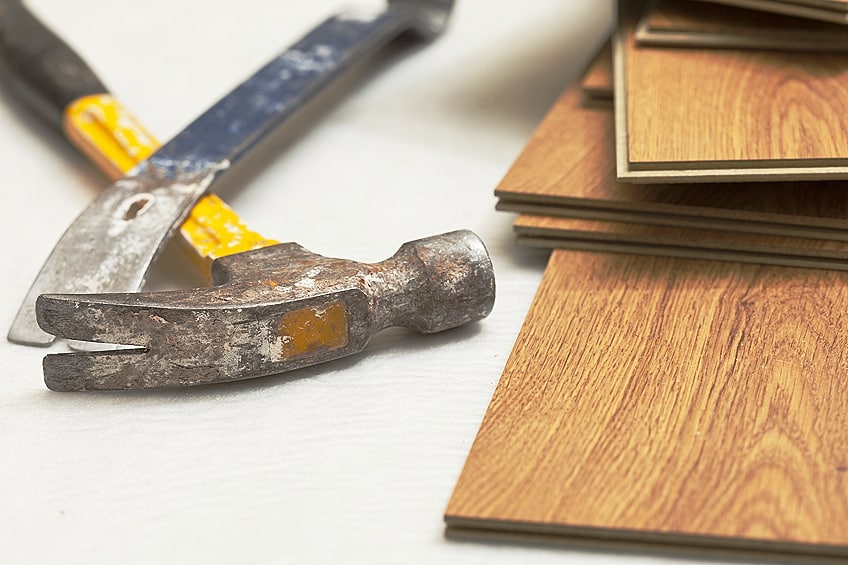
Pry Bar Uses
Pry bars are predominantly used for lifting, moving, or prying apart materials. In construction and demolition, they can remove nails, dismantle wooden structures, and assist in fitting components. Flooring specialists often rely on pry bars to adjust or remove floorboards.
Auto mechanics use them to align parts during assembly or to carefully separate components without causing damage.
What Is a Crowbar?
A crowbar is a robust metal bar with a single curved end and flattened points, often hexagonal in cross-section to provide a better grip. It is a tool designed for levering apart structures or for removing nails.
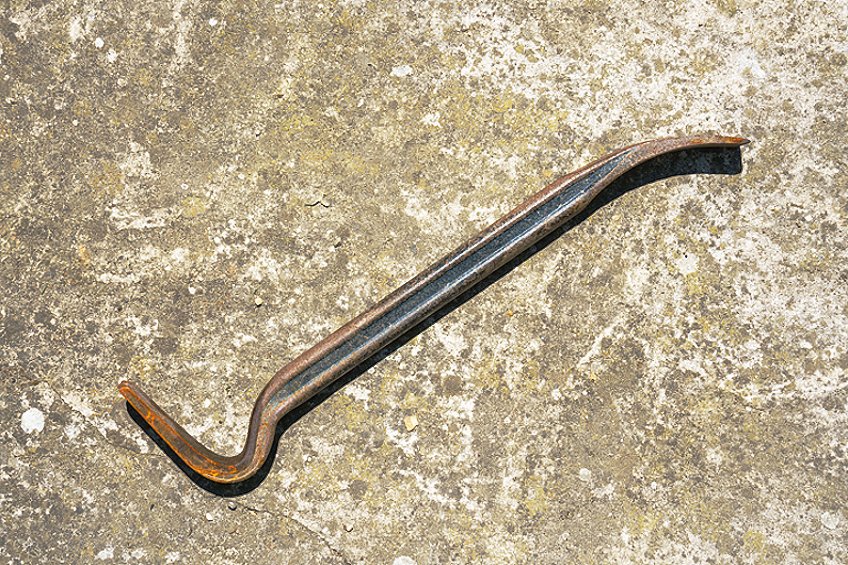
Crowbar Uses
Crowbars are versatile marvels in the world of construction and demolition. Their sturdy design and formidable leverage make them indispensable for a variety of tasks. In construction, they excel at prying apart wooden boards, effortlessly removing nails, and swiftly dismantling structures with precision. In the realm of demolition, they reign supreme, playing an integral role in tearing down walls, breaking up concrete, and tackling other formidable tasks with ease.
With their unrivaled strength and versatility, crowbars prove time and again to be the ultimate tool for any job requiring muscle and finesse.
Types of Crowbar
- Wrecking bar: Features a “goose neck” curved end for increased leverage.
- Digging bar: Longer and heavier, suitable for breaking up hard materials like soil or concrete.
- Flat bar: Flatter and more compact, ideal for lighter tasks and more precise levering.
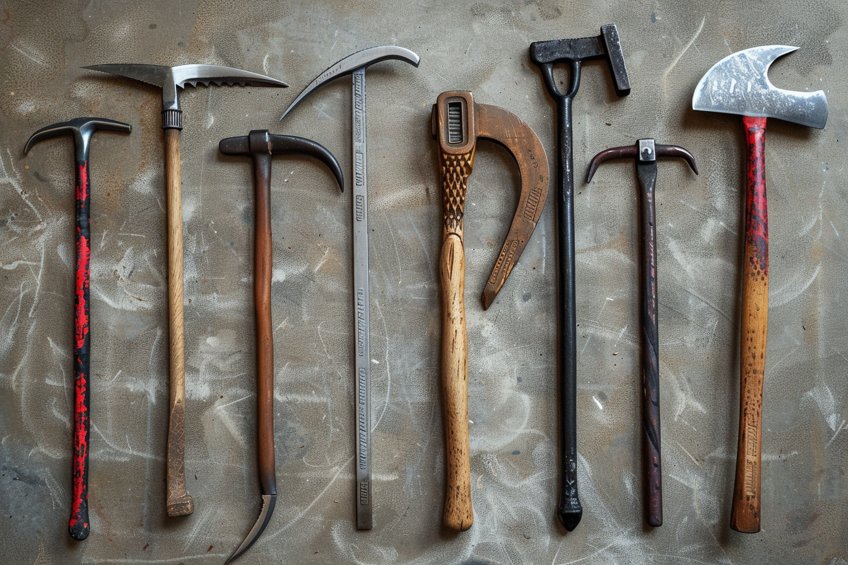
Pry Bar Versus Crowbar: Definitions and Uses
In discerning the distinctions between a pry bar and a crowbar, it’s imperative to consider their specific properties and the array of tasks they are tailored for. Both serve as indispensable hand tools for professionals and DIY enthusiasts alike, offering versatility in demolition, construction, and home improvement projects.
Understanding the Fundamentals
A pry bar, also known as a flat pry bar, is designed with a flat, often thinner form factor to provide access and leverage in tighter spaces. Crowbars are recognized by their heftier build and typically incorporate a curved design to maximize leverage. The inherent purpose of both tools is the application of leverage for prying, lifting, and moving heavy objects.
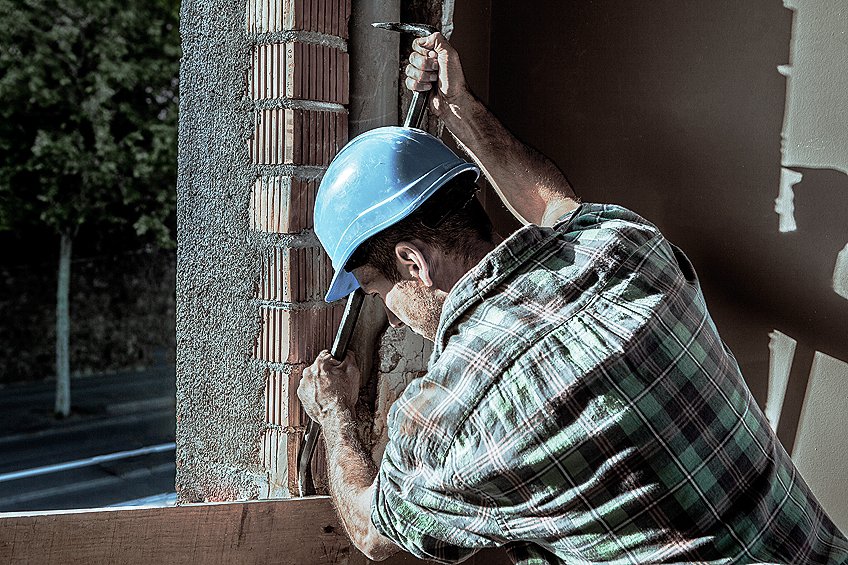
Material and Design
These tools are predominantly crafted from steel, with variations like carbon steel and titanium offering a balance between durability and weight. Pry bars often present a flat and straight design, possibly featuring a chisel end or claw for specific tasks such as nail-pulling or scraping.
Crowbars, alternatively, boast a curved end to optimize the exertion of force, making them ideal for hefty demolition jobs.
Functionality and Applications
While a pry bar excels in more intricate work such as removing nails from wood or prying apart paneling, a crowbar is typically employed in more demanding settings like breaking apart concrete or during major demolition tasks. Both tools can be used to lift heavy objects, but crowbars generally provide more power due to their design.
- Pry bar: Ideal for paint can opening, stuck windows, and floor tiling adjustments.
- Crowbar: Preferred for breaking up concrete, woodwork, and heavier construction endeavors.

Types and Variations
There are numerous variations of pry and crowbars including the wrecking bar, pinch bar, and claw bar. The gooseneck pry bar and heavy-duty pry bar cater to specific tasks requiring distinct shapes for leverage, while an alignment pry bar can also assist in aligning holes in metal pieces or wood for bolts or nails.
Selection Criteria
Selecting the right tool entails assessing the quality, brand, price, and weight. A durable, high-quality bar resistant to bending or rust is essential for longevity. Homeowners might favor a lighter model for ease of use, while professional contractors may invest in heavier, more durable options.
Criteria for pry bar selection:
- Weight: Light for DIY, heavy for professional use
- Design: Claw-end for nail-pulling, chisel end for scraping
Criteria for crowbar selection:
- Leverage: High leverage for strenuous demolition
- Material: Sturdy to withstand high-force applications
When buying these tools, one should consult a buying guide and consider their needs, whether it be for occasional DIY tasks or regular professional use, to ensure the acquisition of the most appropriate hand tool.
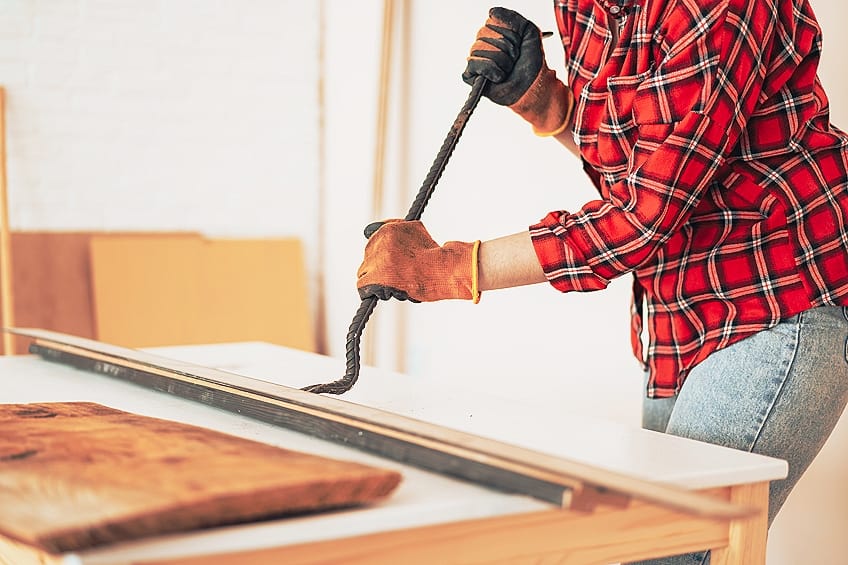
As we wrap up our exploration into the battle of the pry bar versus crowbar, one thing becomes abundantly clear: both tools are indispensable champions in the world of woodworking. Whether you’re prying open stubborn boards, loosening nails, or just generally wreaking havoc on reluctant materials, each has its own unique strengths and applications. While the pry bar might excel in precision and finesse, the crowbar’s raw power and brute force cannot be underestimated. Ultimately, the choice between them depends on the task at hand and the wielder’s preference. So, the next time you find yourself in a woodworking dilemma, remember the age-old question: to pry or to crow? Perhaps the answer lies in the satisfying clang of metal meeting wood, as you harness the might of these mighty tools to conquer your next project!
Frequently Asked Questions
How Do You Distinguish Between Pry Bar and Crowbar Marks?
Marks left by pry bars tend to be narrower and more precise due to the tool’s flat and thin design. The crowbar, being thicker and often curved, tends to leave wider, more curved indentations or marks, reflecting its larger form factor.
What Is the Intended Purpose of a Crowbar in Comparison to Other Prying Tools?
Crowbars are intended for heavy-duty tasks where leverage and force are needed, such as in construction and demolition jobs. The curved shape and typically longer length provide a better mechanical advantage, making it suitable for jobs that require more force, such as prying apart boards or removing nails on a larger scale. Other prying tools, like pry bars, are designed for more precision tasks, utilizing their smaller and flatter form to fit into tighter spaces for tasks like removing small nails or opening paint cans.

I have been into woodworking since 2005 and woodturning since 2011. Because of my love for wood and woodworking, I started woodhappen.com to teach other enthusiasts about how to finish and seal wood, the best woodworking tools, the different types of wood, and everything else related to woodworking! Read more about me here.

